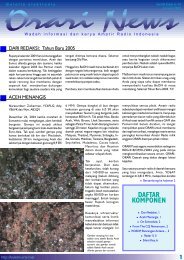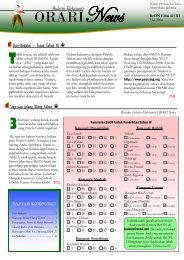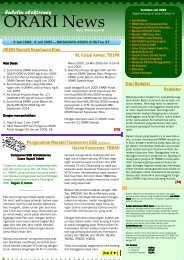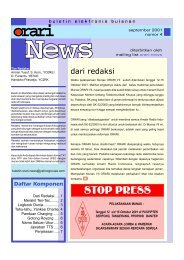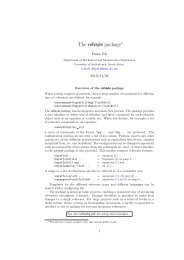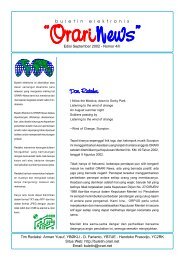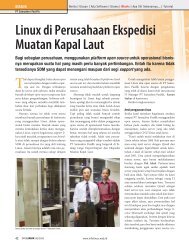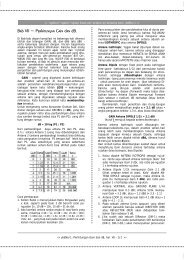The bicaption package - Kambing UI
The bicaption package - Kambing UI
The bicaption package - Kambing UI
You also want an ePaper? Increase the reach of your titles
YUMPU automatically turns print PDFs into web optimized ePapers that Google loves.
i-singlelinecheck=<br />
bi-swap=<br />
\<strong>bicaption</strong><br />
\<strong>bicaption</strong>box<br />
\bisubcaption<br />
\bisubcaptionbox<br />
bi-slc= Switches the common single-line-check on or off, i.e. when switched<br />
on only a single check will be done for both captions, and the result<br />
will affect both captions afterwards. So if only one caption is longer<br />
than a single line, both captions will be treated as if they are longer<br />
than a single line, even if the second one isn’t. (<strong>The</strong> default is on.)<br />
bi-swap=<br />
\captionsetup{bi-swap}<br />
will swap the primary and secondary language, making the first language<br />
the second one and vice versa. (<strong>The</strong> default is false.)<br />
4 <strong>The</strong> \<strong>bicaption</strong> commands<br />
Bilingual captions will be typeset by<br />
\<strong>bicaption</strong>[〈list entry #1〉]{〈heading #1〉}<br />
[〈list entry #2〉]{〈heading #2〉}<br />
\<strong>bicaption</strong>*{〈heading #1〉}{〈heading #2〉}<br />
<strong>The</strong> \label should be placed either after this command, or inside the first heading.<br />
Bilingual caption boxes will be typeset by<br />
\<strong>bicaption</strong>box[〈list entry #1〉]{〈heading #1〉}<br />
[〈list entry #2〉]{〈heading #2〉}<br />
[〈width〉][〈inner-pos〉]{〈contents〉}<br />
\<strong>bicaption</strong>box*{〈heading #1〉}{〈heading #2〉}<br />
[〈width〉][〈inner-pos〉]{〈contents〉}<br />
<strong>The</strong> \label should be placed inside the first heading.<br />
(For a description of the optional parameters 〈width〉 and 〈inner-pos〉 please take a look at the<br />
caption <strong>package</strong> documentation, \captionbox.)<br />
If the subcaption <strong>package</strong> is loaded, these commands are available additionally:<br />
Bilingual sub-captions will be typeset by<br />
\bisubcaption[〈list entry #1〉]{〈heading #1〉}<br />
[〈list entry #2〉]{〈heading #2〉}<br />
\bisubcaption*{〈heading #1〉}{〈heading #2〉}<br />
<strong>The</strong> \label should be placed either after this command, or inside the first heading.<br />
Bilingual sub-caption boxes will be typeset by<br />
\bisubcaptionbox[〈list entry #1〉]{〈heading #1〉}<br />
[〈list entry #2〉]{〈heading #2〉}<br />
[〈width〉][〈inner-pos〉]{〈contents〉}<br />
\bisubcaptionbox*{〈heading #1〉}{〈heading #2〉}<br />
[〈width〉][〈inner-pos〉]{〈contents〉}<br />
<strong>The</strong> \label should be placed inside the first heading.<br />
(For a description of the optional parameters 〈width〉 and 〈inner-pos〉 please take a look at the<br />
subcaption <strong>package</strong> documentation, \subcaptionbox.)<br />
4




